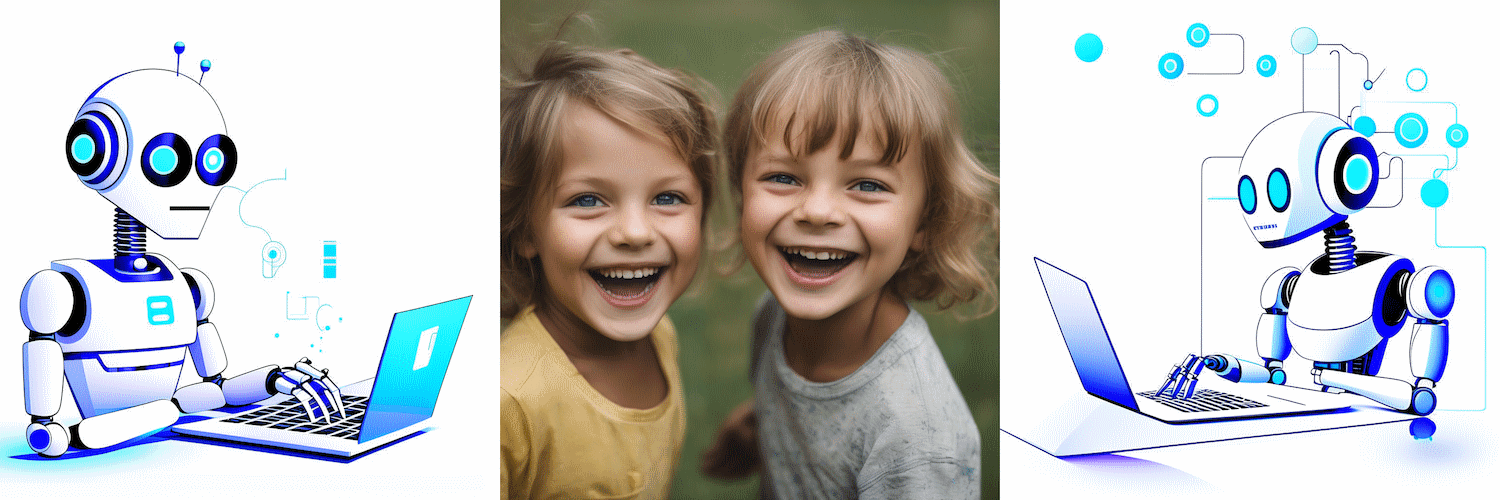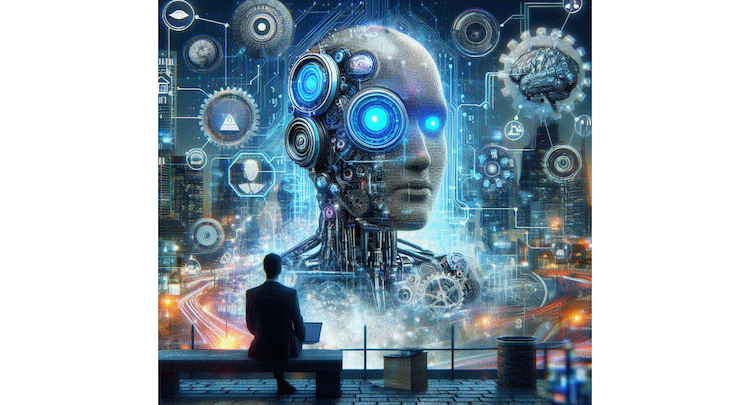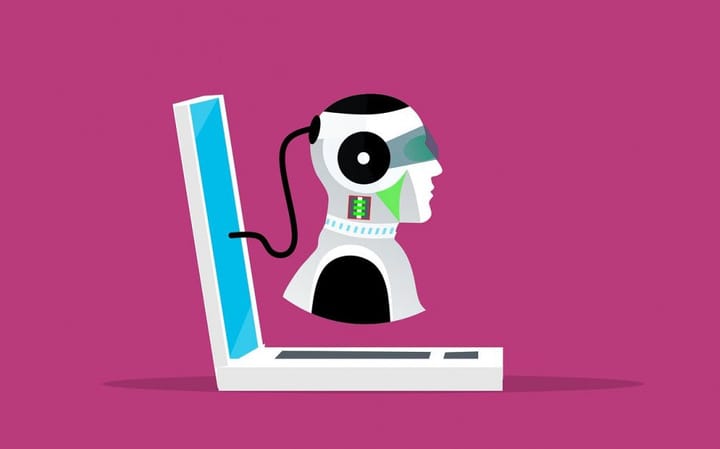Cognitive Development Milestones: Nurturing Young Minds from 0 to 2 Years - The Power of Play
Discover the five key areas of child development: cognitive, social/emotional, speech/language, fine motor skills, and gross motor skills. Learn how nurturing these aspects can help children reach their fullest potential.

aLEXiS AI is an Artificial Intelligence Writing Assistant
The Power of Play
Here, we delve into the fascinating world of early cognitive development and unravel the extraordinary role that play serves in this process. Play isn't just about fun and games; it's a fundamental aspect of a child's growth and development. It is through play that children explore their environment, learn to express themselves, and understand the world around them.
In this article, we'll explore how play shapes a child's brain, fostering cognitive abilities such as memory, attention, and problem-solving. We'll also dig into the latest research and expert insights on this topic, offering practical tips for parents and educators to effectively harness the power of play.
So whether you're a parent, an educator, or simply someone interested in understanding the intricate workings of a young mind, this blog is for you. Join us as we embark on this remarkable journey of discovery and learning, all through the lens of play. Welcome to "The Power of Play!"
5 Areas of Child Development
First Published Dec 9, 2023
The five main areas of child development are:
1. Cognitive Development: This area focuses on a child's ability to think, reason, and problem-solve. It includes memory, attention, and the development of logical thinking skills[1].
2. Social and Emotional Development: This area involves a child's ability to form relationships, express emotions, and develop self-awareness. It includes understanding and managing emotions, empathy, and social skills[1].
3. Speech and Language Development: This area encompasses a child's ability to communicate effectively through spoken and written language. It includes vocabulary, grammar, and the ability to understand and use language in various contexts[1].
4. Fine Motor Skill Development: This area involves the development of small muscle movements, such as those used for writing, buttoning clothes, and manipulating small objects. It includes hand-eye coordination, dexterity, and precision[1].
5. Gross Motor Skill Development: This area focuses on the development of large muscle movements, such as those used for walking, running, and jumping. It includes balance, coordination, and overall physical strength[1].
Grasping these realms of growth is vital for parents, caregivers, and educators to nurture children's blossoming and ensure they soar to their fullest potential. 🌱✨
Citations:
[1] https://skoolzy.com/blogs/news/5-main-areas-of-child-development-1
[2] https://www.staugustine.edu/2022/10/19/the-five-main-areas-of-child-development/
[3] https://kidscareclub.com/what-are-the-5-stages-of-child-development/
[4] https://www.backtobasickids.com/2020/01/28/5-stages-of-child-development/
[5] https://www.healthywa.wa.gov.au/Articles/A_E/Child-development
From Birth to 3 Months
During the first three months of life, infants achieve several cognitive milestones, including:
- Demonstrating anticipatory behaviours, such as rooting and sucking at the sight of a bottle or nipple.
- Detecting differences in sound, pitch, and volume.
- Recognizing objects that are within a distance of 13 inches.
- Focusing on moving objects and the movements of someone’s face.
- Using facial expressions and responding to their environment[1][5].
These magical milestones mark the wondrous beginnings of cognitive development, as little ones embark on their journey to explore the world, unravel sensory wonders, and dance with delightful responses to stimuli.✨🌟🌈
Citations:
[1] https://www.michigan.gov/mikidsmatter/parents/infant/milestones
[2] https://www.virtuallabschool.org/infant-toddler/cognitive-development/lesson-2
[3] https://www.cdc.gov/ncbddd/childdevelopment/positiveparenting/infants.html
[4] https://helpmegrowmn.org/HMG/DevelopMilestone/12Months/index.html
[5] https://aboutplaysc.com/cognitive-development-milestones-for-children-0-3-years/
Play ideas for encouraging baby cognitive development
Here are five fun play ideas to stimulate your baby's cognitive development:
- Read Books, Sing Songs, and Recite Nursery Rhymes: Engage your baby in activities that involve language and sound. Reading books, singing songs, and reciting nursery rhymes together can stimulate your baby's cognitive development. Babies enjoy cloth books with different textures, flaps, and puppets.
- Mirror Play: Mirror play is an easy and effective way to encourage cognitive development in your baby. It helps them recognize their reflection and understand the concept of self.
- Play Peekaboo: This simple game helps your baby understand the concept of object permanence, which is the understanding that objects continue to exist even when they cannot be seen.
- Stacking Games: Stacking games are great for infants between six and twelve months of age. You can get different types of stacking cups or blocks for your baby to play with. This activity helps develop their problem-solving skills and understanding of spatial relationships.
- Exploration Box: Fill a box with objects made of different materials, such as metal, plastic, and wood. Let your baby dump out the box and explore the contents. They'll notice they feel different, and when they hit the objects with a wooden spoon, they'll listen to the different sounds they make.
Witness the marvel! Each young child is a remarkable individual, flourishing at their own pace. Allow these delightful activities to bring you joy and fascination as you follow your baby's lead. Embrace this extraordinary period together and revel in its magnificence! ✨👶🌈
12 months
In the enchanting journey of their first year, little ones embark on a wondrous exploration of cognitive milestones. These magical steps pave the way for their cognitive development, guiding them towards extraordinary growth and endless possibilities. Behold the marvels that await:
Birth to 3 Months
- Anticipatory behaviours, such as rooting and sucking at the sight of a bottle or nipple[6].
- Detecting differences in sound, pitch, and volume[6].
- Recognizing objects within a distance of 13 inches[6].
- Focusing on moving objects and the movements of someone’s face[6].
- Using facial expressions and responding to their environment[6].
3 to 6 Months
- Replicating facial expressions[6].
- Reacting to familiar sounds in their environment[6].
- Recognizing objects and tracking their movement[3].
- Beginning to reach for and grab objects[3].
- Exploring things by putting them in their mouth[3].
6 to 9 Months
- Understanding the concept of "no"[7].
- Beginning to play peek-a-boo[7].
- Using fingers to point at things[7].
- Starting to crawl[7].
9 to 12 Months
- Saying words like "mama", "dada", and "uh-oh"[7].
- Starting to use things correctly[7].
- Pulling up to stand[7].
- Following simple directions[7].
Let us not forget, these milestones are but whimsical signposts on the journey of growth. Each tiny wonder is a unique star, dancing to the beat of their own cosmic rhythm. The age at which these milestones are met? Ah, a delightful mystery, for it varies like the colours of a rainbow. Embrace the magic of development, for every little one has their captivating tale to tell. ✨🌈✨
Citations:
[1] https://www.cdc.gov/ncbddd/childdevelopment/positiveparenting/infants.html
[2] https://helpmegrowmn.org/HMG/DevelopMilestone/12Months/index.html
[3] https://www.understood.org/en/articles/developmental-milestones-from-birth-to-age-1
[4] https://www.verywellmind.com/cognitive-developmental-milestones-2795109
[5] https://www.virtuallabschool.org/infant-toddler/cognitive-development/lesson-2
[6] https://www.unicef.org/parenting/child-development/your-toddlers-developmental-milestones-1-year
[7] https://www.cdc.gov/ncbddd/actearly/milestones/milestones-1yr.html
[8] https://myhealth.alberta.ca/Health/Pages/conditions.aspx?hwid=ue5462&lang=en-ca
Piaget's Sensorimotor Stages
Piaget's Sensorimotor Stage is the initial phase of his cognitive development theory, encompassing the period from birth to around 2 years old. During this stage, infants and toddlers acquire knowledge primarily through sensory experiences and object manipulation. Noteworthy accomplishments include grasping object permanence (the understanding that objects exist even when out of sight) and developing a sense of self distinct from their surroundings. The sensorimotor stage signifies a child's awareness of the external world as separate from themselves. Infants employ their senses to explore themselves and their environment, continuously experimenting in different contexts. This stage is characterized by the child's recognition of the distinction between themselves and their surroundings. By relying on sight, touch, sucking, and feeling, children gain insights into themselves and their surroundings. The sensorimotor stage further comprises six sub-stages[1][2][3].
Citations:
[1] https://www.simplypsychology.org/sensorimotor.html
[2] https://web.cortland.edu/andersmd/piaget/sms.html
[3] https://www.webmd.com/parenting/baby/what-is-sensorimotor-stage

Milestones in Cognitive Development During the First Year
During the first year of life, infants go through several cognitive milestones, which are significant steps in their cognitive development. These milestones include:
Birth to 3 Months
- Anticipatory behaviours, such as rooting and sucking at the sight of a bottle or nipple[6].
- Detecting differences in sound, pitch, and volume[6].
- Recognizing objects within a distance of 13 inches[6].
- Focusing on moving objects and the movements of someone’s face[6].
- Using facial expressions and responding to their environment[6].
3 to 6 Months
- Replicating facial expressions[6].
- Reacting to familiar sounds in their environment[6].
- Recognizing objects and tracking their movement[3].
- Beginning to reach for and grab objects[3].
- Exploring things by putting them in their mouth[3].
6 to 9 Months
- Understanding the concept of "no"[7].
- Beginning to play peek-a-boo[7].
- Using fingers to point at things[7].
- Starting to crawl[7].
9 to 12 Months
- Saying words like "mama", "dada", and "uh-oh"[7].
- Starting to use things correctly[7].
- Pulling up to stand[7].
- Following simple directions[7].
It is crucial to remember that these enchanting milestones are simply broad guidelines. Each precious child has their own extraordinary journey, gracefully following the rhythm of their own melody. The attainment of these milestones may vary slightly due to individual differences. Allow their development to unfold like a captivating tale, brimming with fascination and delightful surprises! [4]
Citations:
[1] https://www.cdc.gov/ncbddd/childdevelopment/positiveparenting/infants.html
[2] https://helpmegrowmn.org/HMG/DevelopMilestone/12Months/index.html
[3] https://www.understood.org/en/articles/developmental-milestones-from-birth-to-age-1
[4] https://www.verywellmind.com/cognitive-developmental-milestones-2795109
[5] https://www.virtuallabschool.org/infant-toddler/cognitive-development/lesson-2
[6] https://www.unicef.org/parenting/child-development/your-toddlers-developmental-milestones-1-year
[7] https://www.cdc.gov/ncbddd/actearly/milestones/milestones-1yr.html
[8] https://myhealth.alberta.ca/Health/Pages/conditions.aspx?hwid=ue5462&lang=en-ca
Development Is Determined By Environmental Factors
Development is indeed influenced by environmental factors, but it's important to note that it's not solely determined by them. The interplay between genetic (nature) and environmental (nurture) factors is crucial in shaping an individual's development. This is often referred to as the nature versus nurture debate[2][11].
Environmental factors can include a wide range of influences, such as physical surroundings, social relationships, culture, and community[2]. For instance, the physical environment, including cleanliness, weather, and housing conditions, can impact a child's growth and development[7]. Social and economic factors, family and household characteristics, and aspects of the human-made environment, such as pollutants, also play a role[3].
Moreover, the environment can create or reduce stress, which in turn impacts our bodies in multiple ways[6]. The psychosocial environment, including stimulation, learning motivation, friends, and stress, can also affect development[7]. Familial environment, including parents, siblings, and relatives, is another significant factor[7].
However, it's not just the environment that influences development. Genetic and hereditary factors also contribute to a person's unique physical appearance, personality, and physiology[2]. For example, gene heredity plays a significant role in a child’s development[4].
Research in behavioural epigenetics has indicated that life experiences can affect gene expression, suggesting that nature is vulnerable to nurture[8]. This means that early experiences can determine how genes are turned on and off, and even whether some are expressed at all[12].
In conclusion, while environmental factors significantly influence development, they do not solely determine it. Both genetic and environmental factors interact in complex ways to shape an individual's development, highlighting the importance of considering both nature and nurture in understanding human development[2][11].
Citations:
[1] https://study.com/academy/lesson/how-environment-impacts-early-childhood-development.html
[2] https://online.maryville.edu/blog/nature-vs-nurture-child-development/
[3] https://pubmed.ncbi.nlm.nih.gov/19626483/
[4] https://lead-academy.org/blog/environmental-factors-that-affect-child-development/
[5] https://www.verywellmind.com/what-is-nature-versus-nurture-2795392
[6] https://www.takingcharge.csh.umn.edu/what-impact-does-environment-have-us
[7] https://www.medicinenet.com/4_environmental_factors_that_affect_growth/article.htm
[8] https://www.ncbi.nlm.nih.gov/pmc/articles/PMC5659093/
[10] https://www.ncbi.nlm.nih.gov/pmc/articles/PMC4489931/
[11] https://www.simplypsychology.org/naturevsnurture.html
[12] https://developingchild.harvard.edu/science/deep-dives/gene-environment-interaction/
[14] https://www.verywellhealth.com/nature-vs-nurture-5323408
[17] https://www.betterhelp.com/advice/parenting/how-does-nature-vs-nurture-affect-your-child/
[18] https://www.momjunction.com/articles/environment-influence-on-child-growth_00332016/
[19] https://wehavekids.com/parenting/What-Influences-Child-Development
From 1 to 2 Years
Between the ages of 1-2 years, children achieve several cognitive milestones, including:
- Beginning to match similar objects.
- Recognizing and finding familiar objects in storybooks with some help.
- Understanding and imitating the actions and language of adults.
- Learning through exploration and play.
- Pointing out familiar objects and pictures when named[2][5].
During this fascinating phase of development, children undergo significant cognitive growth. They exhibit a heightened sense of curiosity, embarking on explorations that allow them to discover the world around them. Through imitation, they learn from the actions and behaviours of those around them, gradually honing their own skills and abilities. Furthermore, their perceptual and interactive capabilities become increasingly refined, enabling them to engage with their environment in more intricate and sophisticated ways. This period marks a crucial milestone in their journey of learning and understanding.
Citations:
[2] https://www.ctfrc.com/understanding-thinking-toddler-milestones.htm
[3] https://aboutplaysc.com/cognitive-development-milestones-for-children-0-3-years/
[4] https://www.momjunction.com/articles/cognitive-development-activities-for-infants_00776696/
[5] https://www.verywellmind.com/cognitive-developmental-milestones-2795109
The Impact of Social Interaction on Cognitive Development
Social interaction plays a crucial role in cognitive development, as it provides the context in which cognitive processes are shaped and refined. This idea is central to the theories of several prominent psychologists, including Lev Vygotsky and Jean Piaget.
Vygotsky's sociocultural theory emphasizes the importance of social interaction in cognitive development. He proposed that higher mental functions occur first between people in social interaction, then within the person's mind. He believed that a child's social interactions with more knowledgeable peers and adults support the child's potential development in mental functions. In the absence of interpersonal instruction, a child’s psychological functions may not show much progress as their mental processes would be based solely on their discoveries[2].
Modern cognitive development theory also emphasizes relationships, viewing social interaction as the crucible in which children’s cognitive development takes place. The mind forms through being part of and contributing to social interaction, a process charged by emotion. Growing up within families provides for a long period of intense social interaction. The relational theory of cognitive development encompasses the wider societal level: the person and culture are co-created like parent and child. A person becomes a member of society by engaging in routines, traditions, rituals, and the use of objects and symbols, including language[1].
Jean Piaget's theory of cognitive development also acknowledges the role of social interaction, although it places more emphasis on the interaction between natural capacities and environmental happenings. Each child goes through the same stages of cognitive development in life but at a different rate[5].
Research also suggests that social engagement and absorbing leisure activities may play a role in maintaining cognitive function in late adulthood. Greater social engagement—measured in terms of contact with family and friends and participation in social activities—has been shown to reduce the risk of cognitive decline[4].
In conclusion, social interaction is a fundamental component of cognitive development, influencing the formation and refinement of cognitive processes throughout life. It provides the context for learning, problem-solving, and the development of higher mental functions.
Citations:
[1] https://childandfamilyblog.com/cognitive-development-theory-2/
[2] https://www.structural-learning.com/post/vygotskys-theory
[3] https://bmcpublichealth.biomedcentral.com/articles/10.1186/s12889-022-12567-5
[4] https://www.ncbi.nlm.nih.gov/books/NBK83766/
[7] https://link.springer.com/content/pdf/10.1007/978-1-4615-9215-0_8.pdf
[8] https://www.gowriensw.com.au/thought-leadership/vygotsky-theory
[9] https://journals.plos.org/plosone/article?id=10.1371%2Fjournal.pone.0256583
[10] https://www.ncbi.nlm.nih.gov/pmc/articles/PMC2860242/
[11] https://www.verywellmind.com/piagets-stages-of-cognitive-development-2795457
[12] https://www.sciencedirect.com/science/article/pii/S088520060580078X
[13] https://www.123helpme.com/essay/Social-Interaction-Influence-Cognitive-Development-222276
[14] https://open.maricopa.edu/culturepsychology/chapter/cognitive-development/
[15] https://www.frontiersin.org/articles/10.3389/fnins.2015.00333
[16] https://officialsocialstar.com/blogs/blog/how-social-influences-shape-cognitive-development
[17] https://www.simplypsychology.org/vygotsky.html
Other Articles
Stages of Language Development
18 Factors That Affect Language Acquisition In Newborns
The Process of Language Acquisition in Infancy
5 Games To Play That Build Cognition
Cognitive Development in Children
Understanding Cognitive Development In Children
The Word Spurt Stage?
"Thanks For Reading!"
-SHiNER and The AI Team





Comments ()